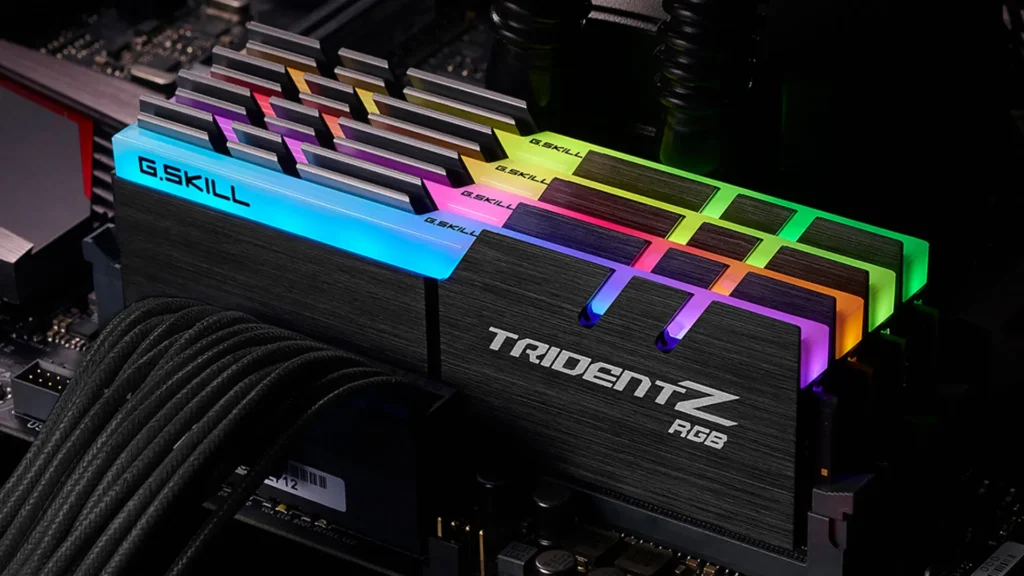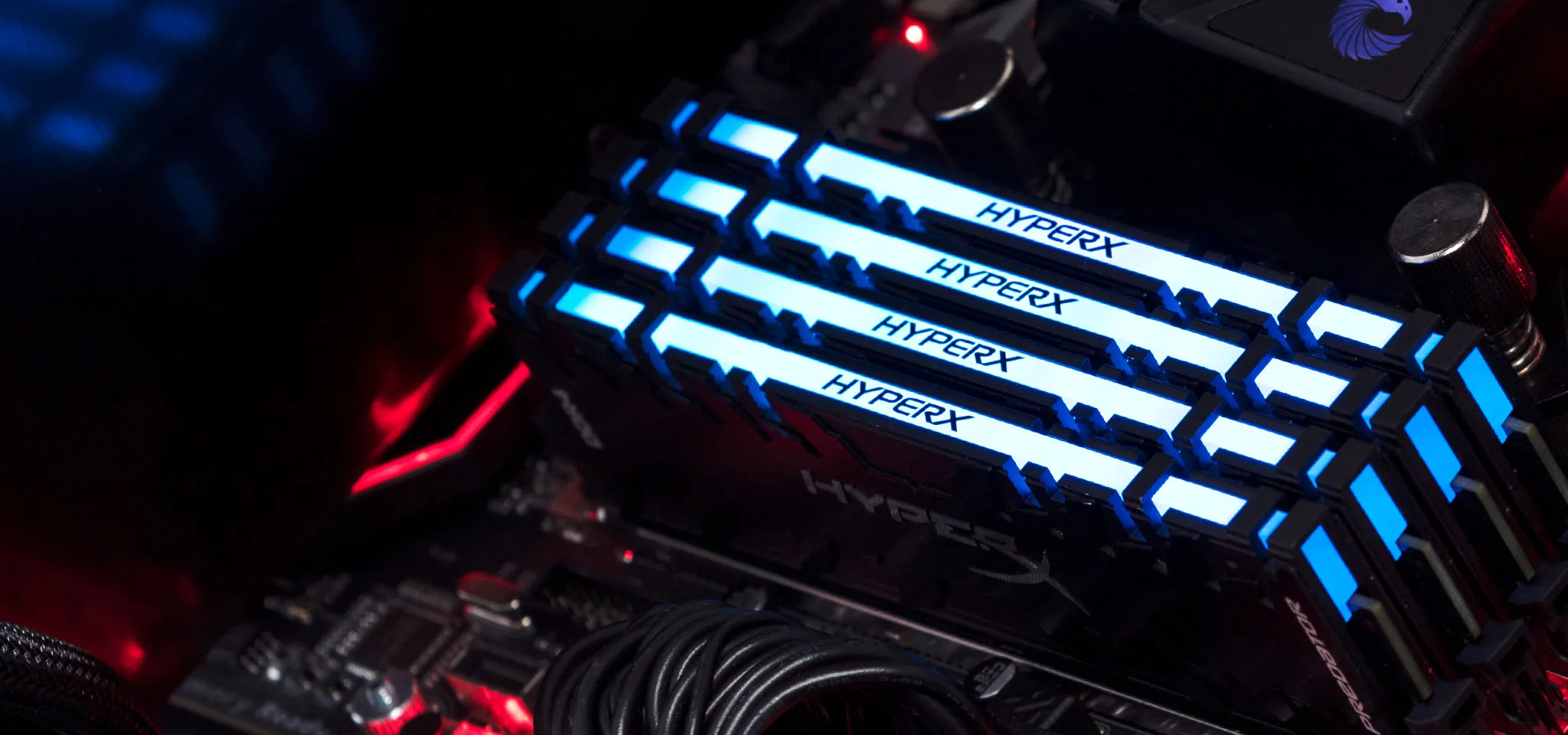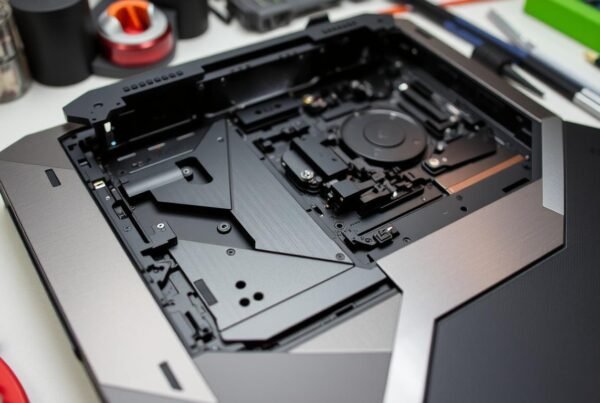DDR stands for Double Data Rate. It’s a type of memory technology used in RAM or Random Access Memory. It’s a method that transfers data twice per each clock cycle performed; hence, it’s the doubling of the data rate—hence the name, DDR. Commonly used in computers and other electronic devices, DDR RAM enables processing of data in much faster and more efficient way.
Contents
- 1 Delving Deeper into DDR5 RAM Technology
- 2 Speed Comparison: DDR4 vs DDR5
- 3 Capacity Differences: DDR4 vs DDR5
- 4 Power Efficiency: DDR4 vs DDR5
- 5 Compatibility with Motherboards: DDR4 vs DDR5
- 6 Overclocking Capabilities: DDR4 vs DDR5
- 7 Price Variations: DDR4 vs DDR5
- 8 Future Prospects: DDR4 vs DDR5
- 9 Conclusion: Choosing Between DDR4 and DDR5 RAM for Your Computer
Understanding DDR4 RAM Technology
DDR4, which is shorthand for Double Data Rate 4 memory, happens to be the fourth generation of DDR RAM. Its prowess outplays the previous ones: it has higher speed, efficiency, and capacity. Nowadays, most computers, servers, and all other devices needing fast data processing use DDR4.
Delving Deeper into DDR5 RAM Technology
DDR5, or Double Data Rate 5, is the latest type of DRAM memory. It is an improvement over DDR4 with higher data rates, greater capacity, and efficiency. This is quite a huge improvement in performance, especially for applications with high demand—be it gaming, data centers, or powerful computing.
Speed Comparison: DDR4 vs DDR5
The principal difference between DDR4 and DDR5 in speed is the rate of transferring data and the quantity of data they can handle at once. DDR5 shows a massive boost in these parameters over DDR4. Here’s a comparison between them:
Data Transfer Rate
DDR4: DDR4 is capable of transferring data at rates between 1600 Mhz (million transfers per second) at the lower end up to 3200 Mhz or more with some overclocked modules.
DDR5: DDR5 begins at a base transfer rate of 4800 Mhz and increases to 6400 Mhz or more when overclocked modules are used. In some instances, DDR5 modules are expected to hit 8400 Mhz or higher as the technology matures.
Bandwidth
DDR4: The theoretical maximum speed for DDR4-3200 (a common fast variant) is around 25.6 GB/s per module.
DDR5: It starts at 4800 Mhz in speed and offers about 38.4 GB/s for each module. At its fastest speed of 6400 Mhz, DDR5 gets to 51.2 GB/s for each module.
Channel Structure and Efficiency
DDR5 has two 32-bit subchannels for each module, while DDR4 has one 64-bit channel. This change makes data handling more efficient. The new design helps DDR5 use its higher bandwidth better, especially in applications that run many tasks at once.
Summary of Speed Differences
DDR4 Max Speed: Up to 3200 mhz (standard); about 25.6 GB/s bandwidth.
DDR5 Starting Speed: 4800 Mhz, with speeds going to 6400 Mhz and beyond; bandwidth up to 51.2 GB/s per module. In general terms, DDR5 is speedier; it also has an improved channel design so that it could process more data per second compared to DDR4. That vastly improves performance in applications that rely heavily on memory: gaming, content creation, and heavy data programs.
Capacity Differences: DDR4 vs DDR5
DDR4 and DDR5 differ greatly in how much memory each module can hold. That is because of new technology helping DDR5 manage larger amounts of data better. Here’s a comparison of their capacity:
Capacity Per Module :
DDR4: DDR4 modules come in sizes ranging from 4GB to 64GB per module, with 32GB and 64GB most common for high-end options. In practical applications, the majority of consumer systems achieve a total of around 64GB to 128GB of RAM with four DIMMs.
DDR5: DDR5 modules may carry much larger amounts of data, starting from similar sizes but going up to 128GB per module. The highest possible capacity for each DDR5 DIMM is 128GB, due to better memory chips and stacking methods. This allows DDR5 systems to use up to 512GB or more of RAM in high-end or server setups using several modules.
Capacity Scalability :
DDR4: The maximum capacity of DDR4 is limited by the older manufacturing processes and chips of lower density, restricting how much RAM can be fitted onto a single module. This means that in practice, adding more memory often requires more modules.
DDR5: It uses new technologies and higher memory density, which allows storing more data within the same space. That helps to add more memory without extra slots, which is especially helpful for servers and workstations where saving space and energy is paramount.
Summary of Capacity Differences DDR4: Up to 64GB per module, and high-end systems tend to run with 128GB to 256GB. DDR5: Up to 128GB per module is supported. Systems could theoretically go as high as 512GB or more using less modules. In simple words, DDR5’s larger size per module is good for servers, data centers, AI, and strong computing systems requiring large memory.
 Power Efficiency: DDR4 vs DDR5
Power Efficiency: DDR4 vs DDR5
Voltage: DDR4 runs at 1.2 volts, but DDR5 consumes fewer volts at 1.1V.
Power Management: DDR4 depends on the motherboard to control power; DDR5 has on-DIMM PMIC (power management IC) for better stability and efficiency.
Refresh Efficiency: DDR5 uses fine-grained refresh to minimize unnecessary power consumption by refreshing only parts of the memory banks.
All in all, DDR5 consumes as much as 20% fewer watts compared to DDR4—ideal for power-sensitive applications such as data centers and notebooks.
Compatibility with Motherboards: DDR4 vs DDR5
DDR4 Compatibility
Motherboards: Many motherboards that use Intel and AMD chipsets support DDR4. It is the standard used by most home computers, workstations, and servers.
Socket & Slots: DDR4 works on motherboards with DDR4-specific DIMM slots. These are physically dissimilar to the DDR5 slots, so a DDR4 RAM module would not fit into a DDR5 slot and vice versa.
Chipset: DDR4 requires a motherboard with a chipset that supports DDR4 (e.g., Intel 100/200/300 series, AMD Ryzen 1000/2000/3000 series).
DDR5 Compatibility
Motherboards: DDR5 can be used only with newer motherboards designed for DDR5. Those require Intel 12th-gen Alder Lake processors or Ryzen 7000 series from AMD. Further new chipset support is expected in the future. These motherboards have special DIMM slots for DDR5.
Socket & Slots: DDR5 has different DIMM slots, which can’t be used with DDR4. The notch in the slot is located differently, which prevents wrong installation.
Chipset: DDR5 requires a motherboard chipset that can support it, such as Intel’s 600-series (Z690, B660, etc.) and AMD’s AM5 platform for Ryzen 7000 series.
Key Compatibility Differences :
DDR4 is compatible with older and newer motherboards for both Intel and AMD processors.
DDR5 is only compatible with newer motherboards designed for the latest CPUs (Intel 12th generation and AMD Ryzen 7000 series).
Overview:
DDR4: It’s supported by most motherboards for Intel and AMD chips.
DDR5: New motherboards and CPUs that support DDR5 are required; examples include Intel Alder Lake and AMD Ryzen 7000.
Overclocking Capabilities: DDR4 vs DDR5
DDR4 Overclocking
Base Speeds: DDR4 typically runs between 1600 MHz to 3200 MHz out of the box, with some high-end modules possibly reaching 5000 MHz or higher when overclocked.
Overclocking Potential: DDR4 can be overclocked well, and its users often increase the speed to one between 4000 MHz and 5000 MHz with proper cooling and voltage changes. However, the maximum speeds are generally not as high as DDR5.
Voltage: In order to overclock DDR4, it generally involves an increase in voltage for better stability at higher speeds. This can result in increased heat output and power consumption.
Stability: How stable DDR4 is when overclocked depends on how good the memory chips are and how well the motherboard’s memory controller works.
DDR5 Overclocking
Base Speeds: DDR5 comes at 4800 MHz out of the box and goes up to 6400 MHz or more with overclocking.
Overclocking Potential: DDR5 can be overclocked more than DDR4. Some good-quality DDR5 modules will reach speeds of 8000 MHz to 8400 MHz or more due to better memory design, quicker signals, and better power management.
Voltage: DDR5 works at a lower voltage, 1.1V compared to DDR4’s 1.2V, which can help with overclocking without raising heat much. Overclocking DDR5 still requires careful changes in voltage and good cooling.
Stability: DDR5 has better power management and on-DIMM PMIC, meaning it would hold more stable overclocking, even at higher speeds. Top-level overclocking of DDR5 modules, with their increased memory density, may need improved methods for cooling.
Key Overclocking Differences :
DDR4: Enhanced overclocking support with up to 5000 MHz on high-quality modules.
DDR5: Newer technology with much more headroom for overclocking—can go well over 8000 MHz in extreme cases. Better stability due to a rise in power management.
Summary :
DDR4: Possible to overclock to between 4000 MHz and 5000 MHz, but there are voltage and stability limitations.
DDR5: More overclocking headroom, running at speeds of 8000 MHz to 8400 MHz or more with improved stability and power management.
Price Variations: DDR4 vs DDR5
The prices of DDR4 and DDR5 memory modules can be drastically different because of differences in technology, production costs, and market demand. Here’s a comparison between the two:
DDR4 Price :
Lower Price Range: DDR4 is more established and thus has become much more affordable than DDR5. The price for simple DDR4 modules—like 8GB or 16GB kits, with speeds between 2133 MHz and 3200 MHz—normally runs from $30 to $70, based on brand, speed, and size.
Higher Price Range: High-performance DDR4 modules that are faster (like 4000 MHz to 5000 MHz) or have larger sizes (like 32GB to 64GB kits) can cost between $80 and over $200. This cost depends on the features and the ability to overclock.
DDR5 Price :
Higher Price Range: DDR5 is a newer, more advanced technology, so it’s more expensive. In 2024, 8GB DDR5 modules can go for around $50 to $80, while 16GB DDR5 kits can go for $100 to $150 for speeds starting at around 4800 MHz.
Premium Price Range: High-quality DDR5 modules, faster than 6000 MHz to 6400 MHz, in sizes of 32GB to 64GB, are usually sold from $200 to over $500. The price depends on the brand and specifications.
Price Difference Summary
DDR4 is cheaper and has been around longer. You can get it cheaper, with 8GB modules typically costing less than $40, and high-end kits ranging from over $200+.
DDR5 costs more because it uses newer technology and offers better performance. The price of 8GB to 16GB kits starts at around $50 to $150, with the very high-performance and large-capacity modules capable of exceeding $500.
Future Prospects: DDR4 vs DDR5
DDR4:
Mature and cost-effective: Widely used in budget systems and older platforms.
Declining in new builds: As DDR5 becomes the standard, DDR4 will see less adoption in future systems.
Long-term support: Will remain available for upgrades on older systems and continue to be relevant for budget-conscious users.
DDR5:
Future standard: Set to become the standard for high-performance systems like gaming PCs, workstations, and data centers.
Better performance: Offers faster speeds, larger capacities, and improved power efficiency.
Price decline: Initially more expensive, but prices will drop as production scales.
Larger capacities: Supports up to 128GB per DIMM, ideal for enterprise and AI applications.
Conclusion: Choosing Between DDR4 and DDR5 RAM for Your Computer
DDR4 is significantly cheaper, ideal for budget users or those building systems with legacy components. DDR5 is expensive but tends to bring faster speeds, lower power consumption, and more memory. That makes it ideal for people who want the best performance and wish to be prepared for high-end gaming or professional use in the future.
DDR4 will continue for budget and legacy systems, while DDR5 is the future, offering greater speed, efficiency, and capacity for demanding tasks.









